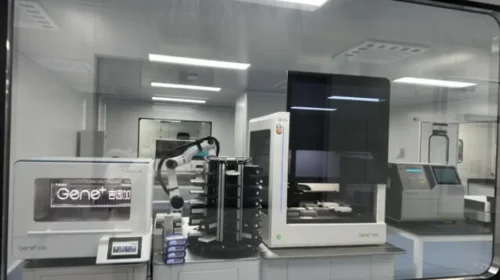FAST NEWS: MicroPort MedBot Revenue Soars in First Full Year of Product Sales

The latest: Surgical robot maker Shanghai MicroPort MedBot (Group) Co. Ltd. (2522.HK) said on Wednesday its revenue jumped by more than 850% last year, while it recorded a net loss of 1.1 billion yuan ($160 million) to 1.15 billion yuan, nearly doubled the 583 million yuan loss in 2021.
Looking up: Despite flareups in the Covid-19 pandemic last year, the company was able to make major progress in the commercialization of its flagship products after recording its first-ever revenue in the second half of 2021.
Take Note: The company was only able to post such strong revenue gains last year because the figure came off a very low base in 2021. Its big loses last year came on the back of heavy spending on research and development, clinical registration efforts and commercialization activities.
Digging Deeper: Factors like high costs, lack of qualified doctors and special license policies are all limiting the use of such surgical robots in China, making their acceptance in the market difficult. Market data showed the penetration rate of robotic-assistance devices for endoscopic surgeries in China was only 0.7% in 2021, much lower than the 15.5% in the U.S. MicroPort MedBot hopes to be at the cutting edge of more widespread adoption of the technology, attracting big name investors including Aspex Management, Hillhouse Capital and Lilly Asia Ventures when it went public in 2021.
Market Reaction: MicroPort MedBot shares tumbled on Thursday, closing down 7.4% at HK$28.10 by the midday break. The stock now trades in the middle of its 52-week range.
Translation by Jony Ho
To subscribe to Bamboo Works free weekly newsletter, click here





